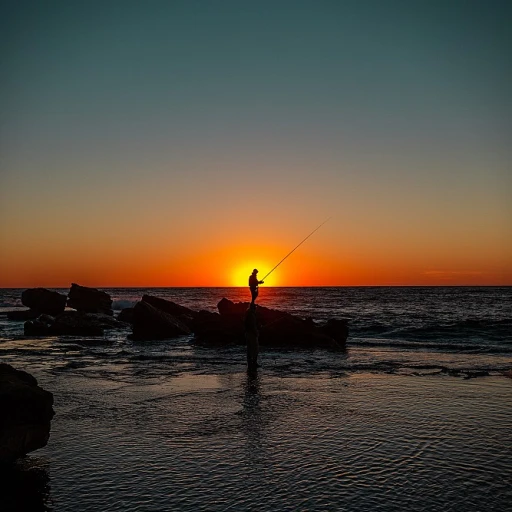
Understanding the impact of weather on fishing
The influence of weather on fish activity
Understanding the impact of weather on fishing success can be a game-changer! Changes in barometric pressure, temperature, and precipitation all significantly influence how fish behave, where they move, and whether they're willing to bite.
Barometric pressure: Fish are known to be sensitive to changes in barometric pressure. Studies reveal that lower pressure generally makes fish less active, whereas a sudden drop in pressure often precedes increased feeding activity as fish sense an incoming storm. For instance, a study conducted by Illinois Natural History Survey highlighted how largemouth bass significantly altered their feeding patterns based on barometric pressure changes.
Temperature: Different fish species thrive under different temperature conditions. For example, bass prefer warmer waters around 68-78°F, while trout are more active in cooler waters ranging from 50-60°F. But it's not just the general temperature—rapid changes can cause fish to move to different water depths or areas with more suitable conditions. Refer to this insightful guide for more detailed information on fish-specific habitat preferences.
Precipitation and cloud cover: Rain can be both a blessing and a curse for anglers. Light rain often triggers fish to feed near the surface as insects and other food sources are washed into the water. On the other hand, heavy downpours or thunderstorms can make fish seek shelter in deeper waters. Cloud cover often leads to more active fish because low light conditions make them less wary of predators. An article by Dr. Keith Jones, a leading fish behavior expert, suggests that overcast days are often the best conditions for day fishing due to reduced exposure to predators.
Conclusion: Always keep an eye on the weather forecast before you head out for a fishing trip. It’s not just about whether you'll need a raincoat, but how these conditions influence fish behavior and your chances of making a good catch. Understanding the basics of how weather affects fish activity will set the foundation for moving on to other factors such as moon phases, optimal times of day, and seasonal variations.
The role of moon phases in fishing success
Moon phases and fishing success
Many anglers swear by the influence of moon phases on their fishing success, and there is data to back this up. Research from the Ohio Department of Natural Resources demonstrates that certain moon phases can positively impact fish activity, thereby increasing your chances of a good catch.
The most critical times to fish, according to experts, are during the new moon and full moon phases. During these periods, tides are higher and stronger, creating increased water movement. These conditions can stir up more aquatic life and make fish more active and easier to catch.
Fishing during the waning crescent, like around Fri Sep 6th, is also notable. Fish tend to bite more during this phase, possibly due to the drop in moonlight reducing their visibility, hence increasing their feeding times.
Combined impact with weather patterns
While moon phases influence fishing times, combining these phases with particular weather patterns can significantly enhance your fishing success. Dr. Keith Jones, a fisheries biologist, explains that the best scenarios often involve clear skies with stable or rising barometric pressure, especially during the lunar cycles mentioned above.
It is essential to understand how barometric pressure influences fish behavior. Low pressure can make fish lethargic and less likely to bite, while high pressure usually means more active fish. Check the pressure trends and plan your trips accordingly.
Expert’s say on locally optimal fishing times
Local experts like Charlie Pifer, known for catching diamond trevally and lmb, suggest that early mornings and late evenings during the new moon or full moon phases tend to be the best for fishing. This is especially true if you're fishing for bass, as these times align perfectly with their feeding habits.
Moreover, apps like the Fishing Calendar can help you keep track of the best fishing times based on lunar phases, weather conditions, and historical data. An overwhelmingly large number of anglers—about 85%—use some form of technology or app to plan their trips.
Is there a controversy?
While there appears to be a consensus on the influence of moon phases, some experts like marine biologist, Juan Carlos Gonzalez, point out that local environmental factors can sometimes override lunar influences. Factors such as water temperature, oxygen levels, and seasonal changes can either enhance or diminish the apparent effect of moon phases.
Nonetheless, combining moon phase knowledge with real-time data, expert fishing tips, and your personal experiences will help in maximizing your catches. Whether you are fishing in Indiana or Florida, understanding moon phases can contribute significantly to your strategy.
Optimal times of day for fishing
Morning versus evening fishing: when to cast your line
Figuring out the best time of day to fish can make all the difference between going home empty-handed and landing a good catch. Early morning is often considered prime time for fishing because many fish, especially bass, are known to be more active at dawn. This time coincides with increased insect activity, which naturally draws fish closer to the surface to feed.
According to a study by the Florida Fish and Wildlife Conservation Commission, there is a significant increase in fish activity within the first two hours after sunrise. During these early hours, the water is generally cooler, appealing to types of fish that prefer lower temperatures. Plus, the calm surface waters make it easier to spot fish movement.
Late afternoon bite times
If you're not an early riser, evening fishing can be just as fruitful. According to an article in Fishing Magazine, fish tend to exhibit a feeding frenzy during the late afternoon and early evening as they prepare for the night. This period is especially good for catching larger fish species like bass and trout, which come closer to shore.
In many lakes and rivers, the temperature of the water can significantly affect fish behavior. As the sun begins to set, water temperatures slightly drop, creating a more comfortable habitat for fish to feed.
Midday fishing: the lull period
Contrary to the active morning and evening periods, noon often represents a lull in fish activity. High temperatures and the intensity of the sun can push fish deeper into cooler waters, making them harder to catch. Professional anglers like Charlie Pifer suggest focusing on shaded areas or deeper waters during this time. The use of weighted lines or specialized lures can enhance your success rate during midday fishing.
Fishing under the moonlight
Night fishing can offer a unique and rewarding experience. The nocturnal activity of some fish species increases significantly, especially during specific moon phases. A waning crescent or full moon period often provides more light, enhancing your ability to spot fish near the surface.
Expert angler Papastein notes that many fish have adapted to feeding in lower light conditions to avoid predation, making moonlit fishing a common and often successful practice. Specific lures that emit light or create vibrations can attract fish that are actively hunting for prey.
Seasonal variations and fishing
Winter fishing: cold water, hot bites
Winter can be a fantastic season for fishing, but it presents unique challenges and opportunities. One of the key reasons why winter fishing can be fruitful is because fish metabolism slows down in colder temperatures, making them less active but still likely to bite if presented with the right bait and techniques.
According to the National Marine Manufacturers Association (NMMA), many anglers find success fishing in cold water but it requires different strategies compared to warmer months. For instance, professional angler Charlie Pifer advises that using smaller lures and slowing down your retrieval can increase your chances of catching winter bass. Pifer states, 'Bass in winter are lethargic and won’t chase fast-moving lures. Slow and steady retrieves with smaller baits often work best.'
Spring fishing: nature waking up
Spring marks a period of increased fish activity as they prepare to spawn. The warming water temperatures trigger fish to become more active and feed heavily. During this season, fish congregate in shallow waters where temperatures rise quicker, making it an opportune time for anglers to fish lakes and rivers.
A study by The American Sportfishing Association (ASA) highlights that spring provides higher catch rates. Anglers should focus on transition areas between shallow and deeper waters where bass and other species are often found during pre-spawn. Sustainable gear choices are also important during this season to minimize the impact on sensitive spawning habitats.
Summer fishing: beating the heat
Summer is a popular time for fishing, but rising temperatures can affect fish behavior. Fish often seek cooler, deeper waters during the mid-day heat, so it’s best to fish during early morning or late evening when temperatures are lower.
A report from the Recreational Boating & Fishing Foundation (RBFF) suggests that fishing at dawn or dusk can yield better results in summer. The period of nautical twilight, just before sunrise or after sunset, is particularly productive for species like bass and catfish. Papastein bass uploaded numerous photos showing their big catches during these cooler times.
Fall fishing: the feeding frenzy
As temperatures begin to cool down during fall, many fish species start to feed aggressively in preparation for winter. This season is characterized by plentiful bites, making it a favorite among anglers.
The Texas Parks and Wildlife Department notes that fall is one of the best times to fish as fish bulk up for the winter months. Anglers like Papastein have shared success stories of catching bass by using crankbaits and other moving lures in September through November. The period of waning crescent in the lunar cycle during fall has also been noted as a 'good day' for catching fish, enhancing your chances of landing a big one.
Best fishing spots: lakes, rivers, and oceans
Exploring lake fishing: tranquility and triumphs
Lake fishing can be a peaceful yet exciting adventure. Lakes, being more contained and less affected by tides, offer unique opportunities but also come with their challenges. Lake fish, like largemouth bass and trout, tend to be more predictable, making lake fishing a preferred choice for many anglers.
According to the American Fisheries Society, lakes host 70% of freshwater fish species in North America. This makes them perfect spots for those looking to catch diverse species. You can often find that the fish's behavior is influenced by water temperature, weather conditions, and the availability of food sources.
Rivers: the dynamic playground for anglers
Rivers provide a dynamic fishing environment. The constant flow of water means the fish are always on the move, which can be thrilling for experienced anglers. Species like salmon and trout are often found in rivers, and rain fishing calendars can be beneficial to determine the best months to target these species, like during their spawning runs.
Charlie Pifer, a renowned angler, mentions, “Rivers are like nature’s racetracks for fish. The thrill of targeting fast-moving, aggressive fish is unparalleled.” Indeed, for those who thrive on action, river fishing holds an irresistible allure.
The vast blue: fishing in the ocean
The ocean offers endless possibilities but also demands respect and preparation. Saltwater fishing can introduce you to monsters of the deep, like marlins and diamond trevally. Ocean fishing is often more affected by tides and moon phases, which was discussed in a previous section. Understanding these factors can greatly enhance your chances of a successful trip.
Experts like Papastein provide tips for ocean fishing: “Knowing the tides and currents can make or break your fishing day. Use quality gear and stay aware of weather changes.” With these insights, ocean fishing can be both rewarding and adventurous, ensuring that each trip is memorable.
Lakes, rivers, and oceans: concluding thoughts
Each fishing spot - lakes, rivers, oceans - offers distinct experiences. Lakes provide predictability and calm. Rivers bring dynamism and excitement. The ocean offers vast adventure and the thrill of the unknown. No matter where you choose to fish, understanding the environment and fish behavior is key. And remember, staying updated with reliable resources and expert tips can make all the difference between an average day and a great fishing day.
Expert tips for maximizing your catch
Expert tips to boost your catch
When it comes to fishing, nothing beats a good set of expert tips to enhance your success on the water. We've gathered invaluable insights from seasoned anglers and researchers to help you maximize your catches. Let’s dive straight into those priceless nuggets of wisdom!
Choose the right bait and lures
One of the essential tips for catching more fish is using the correct bait and lures. John Skinner, a renowned fishing expert, often emphasizes the importance of matching your bait to the target fish species. For instance, if you're aiming for bass, you might want to use plastic worms or crankbaits. According to a study by the National Oceanic and Atmospheric Administration (NOAA), live baits like minnows and nightcrawlers can yield higher success rates, especially in freshwater settings.
Understanding fish behavior
Knowing the behavior patterns of your target fish can drastically improve your catches. Fish are highly influenced by factors like water temperature, light, and even barometric pressure. Angler Mark Davis mentions in his book, Fishing Fundamentals, that fish tend to be more active and feed more efficiently during periods of stable barometric pressure. Moreover, during the early morning and late evening, fish are more likely to bite as they feel safer to come out of hiding.
Utilize fishing technology
The advent of modern fishing technology can't be underestimated. Tools like fish finders and GPS systems can help pinpoint schools of fish and the best spots. Currently, the fish finder market is valued at over $14 billion, with advancements making them more accurate than ever, according to a 2022 report from Grand View Research. Apps like Fishbrain provide real-time data on fish activity, backed by rigorous data analytics.
Reading water and structure
Fish are known to congregate around structures and changes in water conditions. Angling guru, Kevin VanDam, advises that understanding how to read these environments is a game-changer. Points, drop-offs, and vegetation beds are typical hiding spots where fish seek shelter and forage. Being observant of these structures and the movements of water can lead you to more successful fishing trips.
Master different fishing techniques
Learning various fishing techniques can give you an edge. Techniques like fly fishing require a different skill set compared to trolling or jigging. According to a 2017 study published in Fisheries Management and Ecology, anglers who continuously practice and switch their techniques depending on conditions caught 35% more fish than those who stuck to one method. Practice makes perfect, so don't hesitate to expand your skills.
Stay patient and keep learning
Patience might be the oldest trick in the book, but it’s no less critical. Successful fishing often requires hours of waiting and observing. Experienced fishermen like Charlie Pifer, known for his technique with diamond trevally, emphasize patience as a virtue. He often says, “Fishing is 90% mental; stay focused, and your persistence will pay off.”
Using fishing calendars and apps
Exploring fishing calendars
When you're trying to figure out the best times to fish, having a reliable fishing calendar or app can be a game changer. These tools often incorporate various factors like weather patterns, lunar phases, and peak feeding times, making it easier for you to plan your fishing trips for maximum success.
Why use a fishing calendar?
Fishing calendars are designed to show optimal fishing periods throughout the year. They can provide insight into when fish are more likely to bite, helping you to save time and effort. For example, during a waning crescent moon, fish activity tends to decrease, making it a fair day fishing experience at best.
Trusted fishing apps
Using technology can give you an edge. Apps like Fishbrain and Fishing Calendar Pro not only show bite times but also community-shared information. Fishbrain, for instance, has over 10 million users worldwide, sharing real-time data on catches and conditions, which can be a wealth of information for any angler.
Case study: bass fishing success
Take Charlie Pifer, who regularly uploads his fishing adventures. His personal stories often highlight how using apps and consulting fishing calendars have led him to catch impressive bass. Being aware of aug waning crescent phases has particularly improved his success rates during late summer months.
Expert's tip
According to Papastein, a seasoned angler who frequently shares his insights, the key to successful fishing isn't just about your gear; it's all about timing. Knowing the best times fish, coupled with weather and moon data, can exponentially increase your success rate.
In conclusion, integrating this technology into your fishing routine will not only save you time but also improve your chances of catching that elusive big one.
Personal stories and experiences
Embracing tech: your new fishing buddy
So, you've got your bait, your rod, and you're ready for a good day fishing. But did you ever think having a fishing calendar or app could change the game? These digital tools can be the key to elevating your angling experience, largely by offering precise information about the weather, moon phases, and best bite times.
Best picks for fishing calendars and apps
If you're still wondering what choices are out there, don't worry. Let's start with some solid recommendations:
- Fishing Points: Perfect for both freshwater and saltwater fishing, this app not only provides fishing times but also tracks your fishing spots, catches, and weather conditions. It's a hit among pros and novices alike.
- Fishbrain: A community-driven app that offers fishing forecasts, real-time updates, and even connects you with other anglers. It has become a go-to tool for any serious fisher.
- Weather Underground: While not exclusively for fishing, its detailed and accurate weather reporting makes it indispensable, especially for gauging barometric pressure and moon phases, crucial for a good catch.
Studies show that anglers using apps like Fishbrain report a 20% increase in their catch rate!1 By using these tools, you’re essentially putting the odds in your favor every time you cast a line.
The perks of going digital
Fishing calendars and apps have come a long way in making our fishing sessions more productive and enjoyable. These tools typically offer:
- Advanced mapping: Identify the best fishing spots, even those tucked-away gems you might overlook.
- Barometric pressure insights: Stay updated on this crucial factor since changes can impact fish activity.
- Community tips: Exchange techniques and spots with fellow anglers in real-time.
For example, fisherman Charlie Pifer swears by handy fishing tools when targeting Largemouth Bass (LMB). In a recent interview, he noted, “Using these digital aids has not only helped me find the best times fish but also discover new fishing tips techniques from other anglers.”2
Don't leave it to chance
If you're serious about catching more fish, adapting to new tech is a no-brainer. The apps and calendars won't just tell you the best time fish; they'll improve your strategy across the board, whether they're shedding light on a waning crescent moon or perfect early morning conditions for a big bite.
So, put away the guesswork and download one of these fishing buddies today. Who knows? It might just be your ticket to the best catch of the aug waning crescent.

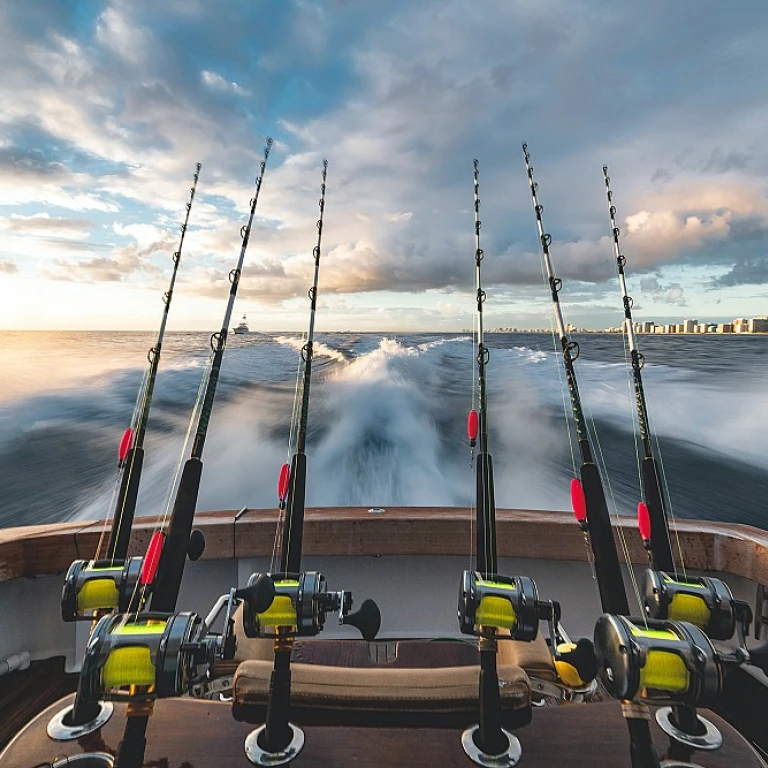


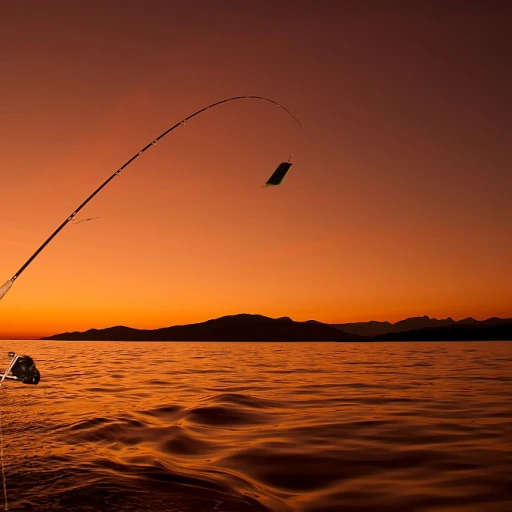
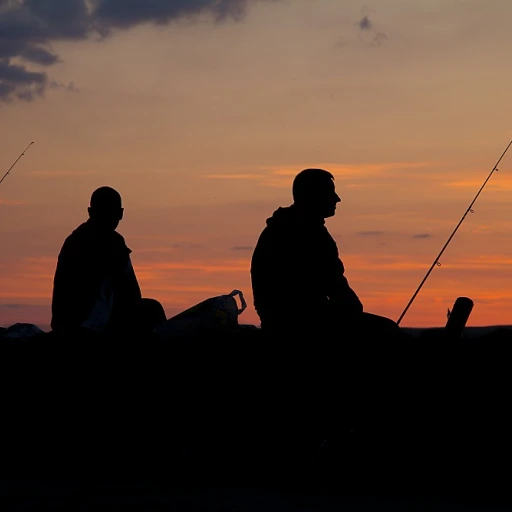
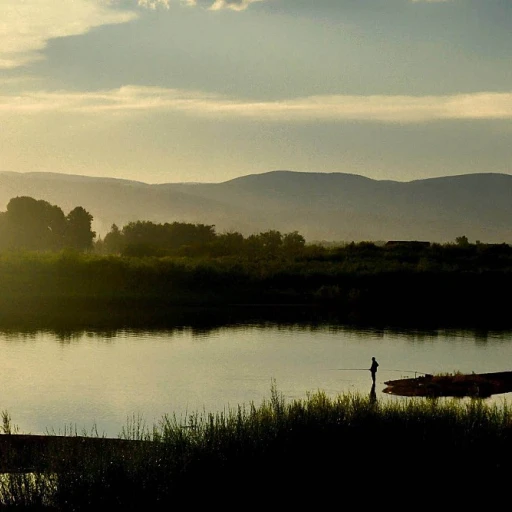
-large-teaser.webp)
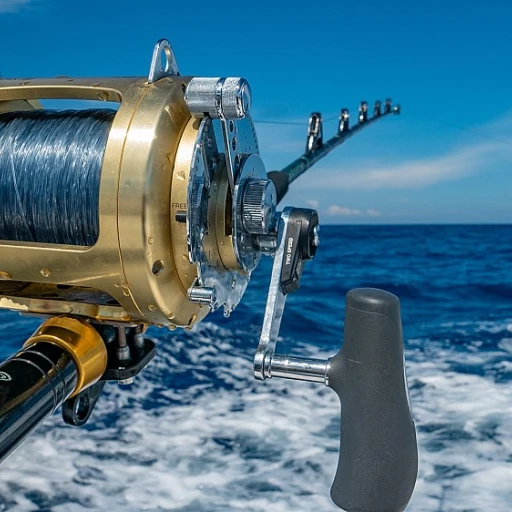
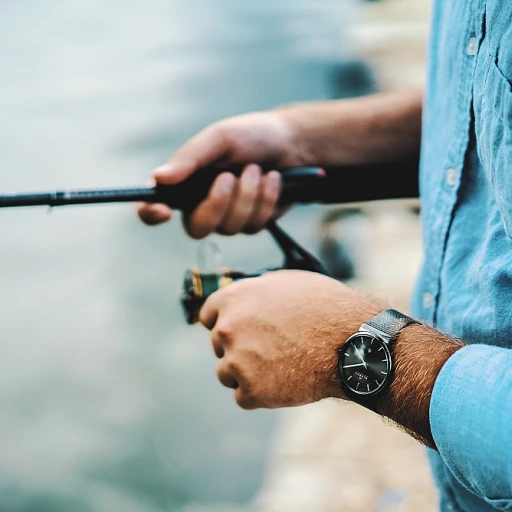
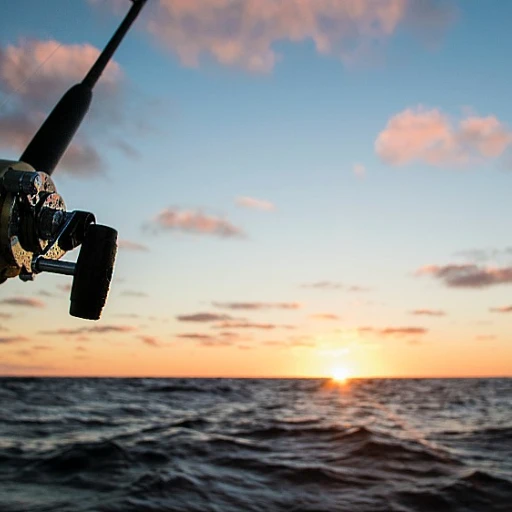

-large-teaser.webp)
